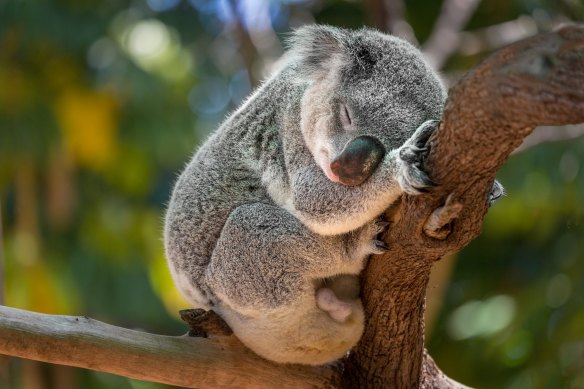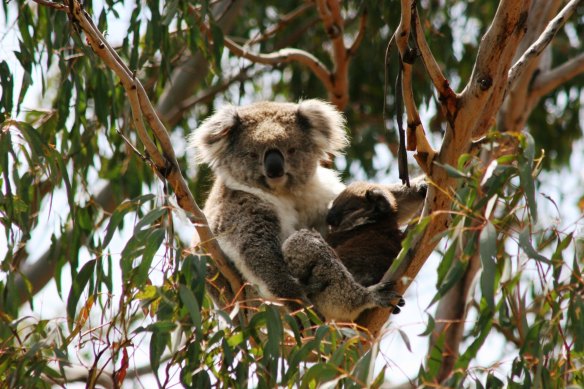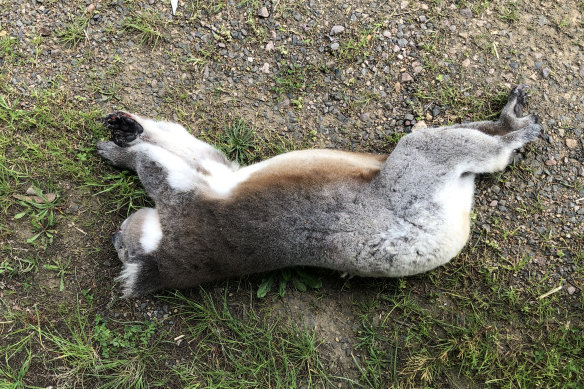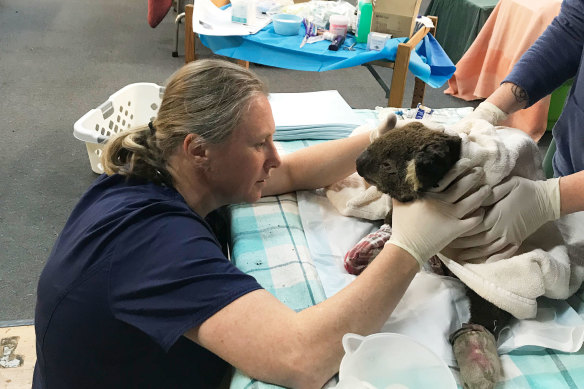Victoria’s koalas: abundant and widespread? Or diseased and dwindling? It’s complicated
Save articles for later
Add articles to your saved list and come back to them any time.
Koalas: iconic. Beloved. Abundant? It’s complicated.
Victoria has released its new koala strategy, 19 years after the first one was created, into a world where the environment is under pressure from global warming, unprecedented bushfires and native habitat destruction.
With approximately 65 per cent of Australia’s total koala population in southern Australia, maintaining healthy Victorian populations is important for the survival of the species.
So, are Victoria’s koalas faring any better than those in NSW, the ACT and Queensland, where they were listed as endangered last year?
Koala in a eucalyptus tree in bushland in Victoria, Australia.Credit: chrissmith731
The new koala strategy finds Victoria still has a large koala population, and estimates there are close to half a million across the state. But despite this, Victoria’s koalas face threats like poor genetic diversity, the risk of disease and climate change — they are particularly vulnerable to heat-related stress.
The Victorian population’s low genetic diversity is a historic legacy from attempts to repopulate the state after the hunting era with koalas from island populations with tiny gene pools. This means they are vulnerable to diseases. Fortunately, there may be small pockets of genetically diverse Victorian koala populations left from pre-hunting times, including in the Strzelecki Ranges.
In Victoria’s southwest, blue gum plantations are a magnet to koalas. In early 2020, hundreds of koalas were found either dead, dehydrated or starving at a private property in Cape Bridgewater, in western Victoria.
A Koala at Phillip Island.
A contractor had been hired to remove stumps in a former bluegum plantation, and the clearing left 70 koalas dead. After a public uproar, the contractor was charged with hundreds of animal cruelty offences and later fined $20,000.
In comparison, koalas at Cape Otway, further east, face a different problem: their love of manna gum means their numbers quickly become unsustainable, and they strip the trees of all food. Last year, more than 100 had to be relocated to the nearby parks and properties, 54 females were given fertility control, and eight had to be euthanised.
Not everyone has faith in the government’s koala strategy. Last week, a new group called Koala Alliance Victoria was launched. Coordinated by koala advocates, volunteers and carers, its launch media release declared Victoria was a “hell zone for koalas — there should be alarm bells going off everywhere”.
Many of the koalas that wildlife carers see have been hit by cars. Credit: Melissa Morey
This alliance is sceptical about government modelling that finds koalas in Victoria are “thriving and abundant”, explains Jess Robertson, a member and the president of Ballarat Wildlife Rehabilitation and Conservation. Robertson is a wildlife rescuer and carer.
“The whole reason the Koala Alliance started is that we can no longer sit back and let this myth continue, this positivity from the government that is not recognising the extent of the problem,” Robertson says.
Robertson is also disappointed the strategy does not focus more heavily on road trauma and dog attacks on koalas, which form the bulk of the injured koalas volunteers see around Ballarat. Out of the 50 koalas rescued by Robertson’s group, only 16 have survived.
“Koalas may be abundant in pockets in Victoria, but there are many regions where they aren’t, and there’s no population monitoring.”
Zoos Victoria vet Leanne Wicker treats an injured koala at the Mallacoota Incident Control Centre during the 2019-2020 bushfires. Credit: Zoos Victoria
Scientists from the Arthur Rylah Institute for Environmental Research (ARI), have developed a model to produce estimates of koala abundance in Victoria. It finds there are 460,000 in total, with 413,000 in native forest and woodland and a further 50,000 in eucalypt plantations.
Professor Desley Whisson, a koala expert and wildlife ecologist from Deakin University, does not agree that Victoria is a “hell zone” for koalas, or that koala populations are declining across the state.
“They are declining in some areas because of a loss of trees, urbanisation and roads but in other areas you see the very sad situation of eating themselves out of house and home,” she says.
Whisson believes the model used to estimate koala numbers is broadly accurate: “There are always going to be errors, always; you can’t cater for everything in a model. But the model is simply a basis for something that we will continually refine.”
A spokesperson for the government said it would invest $3 million over two years towards the delivery of their strategy, including on-ground koala management programs, a statewide survey to improve understanding of koala abundance and research.
Get to the heart of what’s happening with climate change and the environment. Our fortnightly Environment newsletter brings you the news, the issues and the solutions. Sign up here.
Most Viewed in Environment
From our partners
Source: Read Full Article



